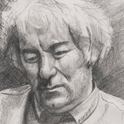Book: Human Accomplishment
Author: Charles Murray
Price: HarperCollins, ?16.35
There is something wrong with Charles Murray's huge book on the history of human intellectual achievement. It is not its ambition, which is admirable, nor the writing, which is mostly clear and lucid. It is not even the book's arguments, which although predictable are at times stimulating. But there is, running right through this book, a set of misconceptions about art and criticism which render the whole project almost completely worthless.
The book is actually two books in one. It starts out with a thoroughly readable history of human civilisation from 800BC to 1950 ending in an interesting evocation of three cities: 2nd-century Rome, medieval Hangzhou and Georgian London. It is not quite clear what these opening 50 pages have to do with the rest of the book, but it is marvellous storytelling, full of vivid detail.
After this enjoyable false start, we get to the real centre of Human Accomplishment, which comprises the great figures and breakthroughs in the arts and sciences of the past 2,000 years. This can be separated out into two main propositions. First, the story of human achievement is essentially about a small number of geniuses - mostly western men from northwest Europe. Second, their achievements - whether King Lear or Newtonian physics - are a matter of fact, not opinion: "It is possible to distinguish the important from the trivial, the fine from the coarse, the credible from the meretricious, and the elegant from the vulgar." In short, says Murray, "a realm of objective knowledge about excellence exists."
There are a number of other subsidiary arguments. Murray tries to demonstrate why certain civilisations rise and fall, what factors create the conditions for human genius and whether human achievement is still on the march or whether we're living through a period of decline. Throughout the book, but concentrated in over 160 pages of notes and appendices at the back, there are pages of detailed statistical analysis that "prove" Murray's assertions about the nature of human achievement. It is a book of enormous ambition and serious intent.
Context, Murray argues, is all. Geniuses don't just appear from nowhere. A culture that values autonomy and purpose, and what he calls "transcendental goods," produces more great figures than one that doesn't. Peace is relatively unimportant. Here Murray sides with Harry Lime: it's Renaissance Italy with its civil wars and upheaval that creates great works of art, not peaceful little Switzerland. Prosperity does matter: he cites the golden age of Spain, 17th-century Holland and the economic prosperity of Florence. There is, writes Murray, "a substantial relationship" between high rates of per capita GDP and accomplishment. But other factors are more important: the availability of role models for aspiring young artists and scientists to follow, a critical mass of talent, concentrated in "elite cities" (Rembrandt's Amsterdam, Einstein's Berlin, Picasso's Paris) and what Murray calls a rich "organising structure."
This emphasis on context is interesting because Murray's own context dominates the book from the acknowledgements to the final summary. This is a polemic by an American east coast neoconservative, an eloquent intervention in the culture wars. "The people who matter", in Murray's phrase, are nearly all dead, white, European and male. The DWEMs are back. "From the middle of 15C to the beginning of 20C, almost everything came from Europe." This isn't a matter of opinion, argues Murray, this is fact. Similarly, hardly any of the great creative figures in mathematics, the arts or sciences are non-white or women. Women, Murray writes, make up just 2 per cent of the great innovators. From Hippocrates to Haydn, this is a male story, says Murray, and he's got the figures to prove it, over 200 pages of graphs, statistics and algorithms.
Murray's book is a polemic against the 1960s - feminism and multiculturalism in particular - and against relativism, especially in aesthetics and the history of ideas. It is also a polemic on behalf of free enterprise and western individualism. Murray is based at the American Enterprise Institute in Washington DC, and his book reflects its shibboleths.
The book's findings are totally unsurprising. If you tried to guess who would come top of Murray's lists of great scientists and artists you would probably guess correctly. Greatest astronomer? Galileo. Top biologist? Darwin. Best physicist? Newton and Einstein, joint first. Greatest philosopher? Aristotle, followed by Plato, followed by Kant. Most outstanding composer? Beethoven and Mozart, also joint first, a little ahead of Bach. Greatest western artist? Michelangelo. Greatest western writers? Shakespeare, Goethe, Dante.
This predictability doesn't trouble Murray at all. It proves he's right. After all, he has asked the experts. He has trawled through numerous recent encyclopedias and reference books, published in several countries and different languages to rule out bias, and noted whom the editors of these works - Laaths's Geschichte der Weltliteratur, Kennedy's Oxford Dictionary of Music, Gombrich's The Story of Art and many more - mention most often. After all, if you want to know about something, you ask an expert. So, if you want to know who was the greatest western artist or physicist, you consult the expert art historians and historians of science, and work out the numbers.
This is where the problems start. First, there is the question of intellectual fashion. Murray is aware of this. That's why he stops the clock at 1950 and doesn't consider contemporary figures because present-day fashions might exaggerate their importance. Look at the 1980s vogue for Foucault and Derrida. How does that look today, let alone in 200 years?
However, Murray doesn't sufficiently consider the rise and fall of reputations in the past (and here I focus on the arts alone). The reference books he consults are from the last 40 years. Only three out of 167 predate the second world war. This creates problems. Take Shakespeare, Murray's greatest western writer. Today, critics from Jonathan Bate to Harold Bloom agree that he was the great literary genius. But it wasn't always so. As George Steiner writes in No Passion Spent: "It is between the mid-1780s and 1830 that the stature of Shakespeare and of his works passes out of the realm of normal valuation and becomes what modern physicists call 'a singularity.'" Reputations have their history. They rise and fall.
Even when a consensus does emerge, it is less rock solid than Murray thinks. Not everyone agrees with his experts about Shakespeare. Tolstoy, TS Eliot, Leavis and Wittgenstein all famously had their reservations about bardolatry. Were they wrong? Might there be something interesting about such disagreements?
Academic preferment, especially in the world of textbooks and reference books, tends to favour those who play the game, who don't rock the boat. People like Leavis and Wittgenstein don't get to edit many textbooks. Another eccentric, Jorge Luis Borges, had a typically idiosyncratic English literary canon, full of late Victorian and Edwardian storytellers like Kipling and Robert Louis Stevenson, rather than the Victorian moralists and realists of Leavis's "great tradition." All Murray's numbers won't prove that one group is objectively greater than the other.
For Murray, the experts are infallible. But we all know instances of when experts got it wrong. Moreover, aesthetic values change over time. Van Gogh never sold a painting. Mozart died in poverty. Jean Millet was scorned by art dealers and collectors. The controversies over post-impressionism and modernism, from Manet to Stravinsky and Joyce, don't need recounting.
However, the point is not whether Murray is right about all of these lists. The question is: how interesting are such disagreements about canons and value judgements? Do they matter or are they just a grandiose parlour game?
Many critics and scholars see themselves as border guards, protecting "the canon" of western literature or "the great tradition" and telling others to keep out. Murray is one of these. Others have seen their job as questioning or criticising these borders, breaking down the frontier posts, redrawing the line to let in popular culture (totally absent from Murray's account), women, non-whites, gays (one paragraph in almost 700 pages), children's writers, adventure writers or great forgotten figures or traditions from the past. These borders are not immutable, as in their different ways Borges, Wittgenstein, Edward Said and John Berger have shown. That is what the culture wars have always been about: contesting the canon.
Murray is not really interested in what might make Byron more interesting than Melville, or why anyone might value Vivaldi more than Haydn. He just wants to keep certain groups off his lawn. He has spent years drawing up his keep-off notice, and in some ways it's very impressive, full of suggestive asides and hard work. But in its complete lack of surprise, originality or interest, it will suffer the fate of all border guard criticism and be quickly forgotten.











